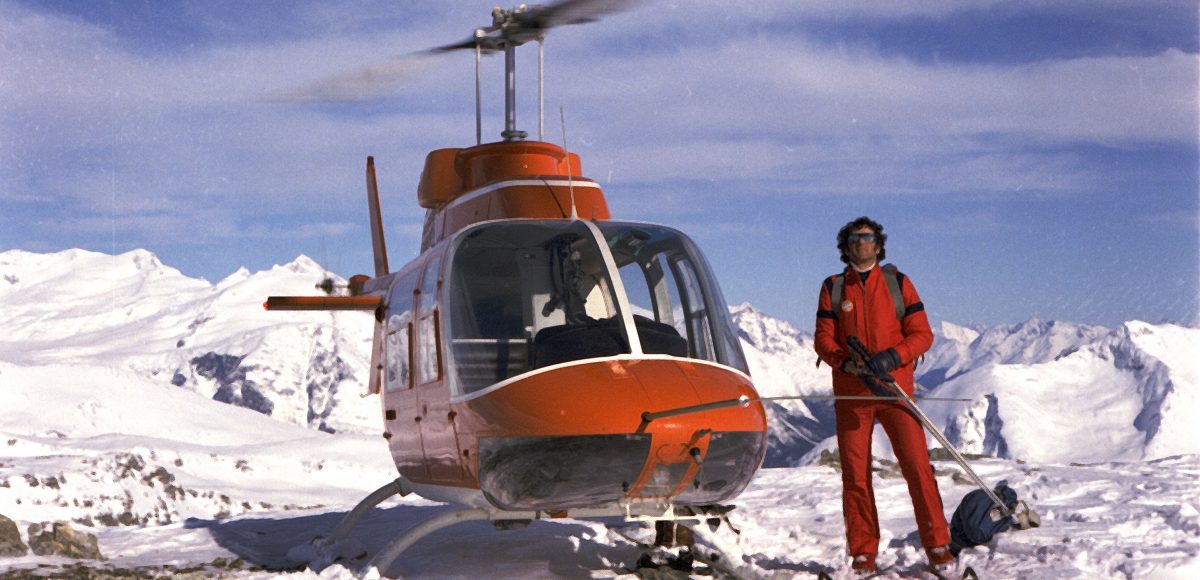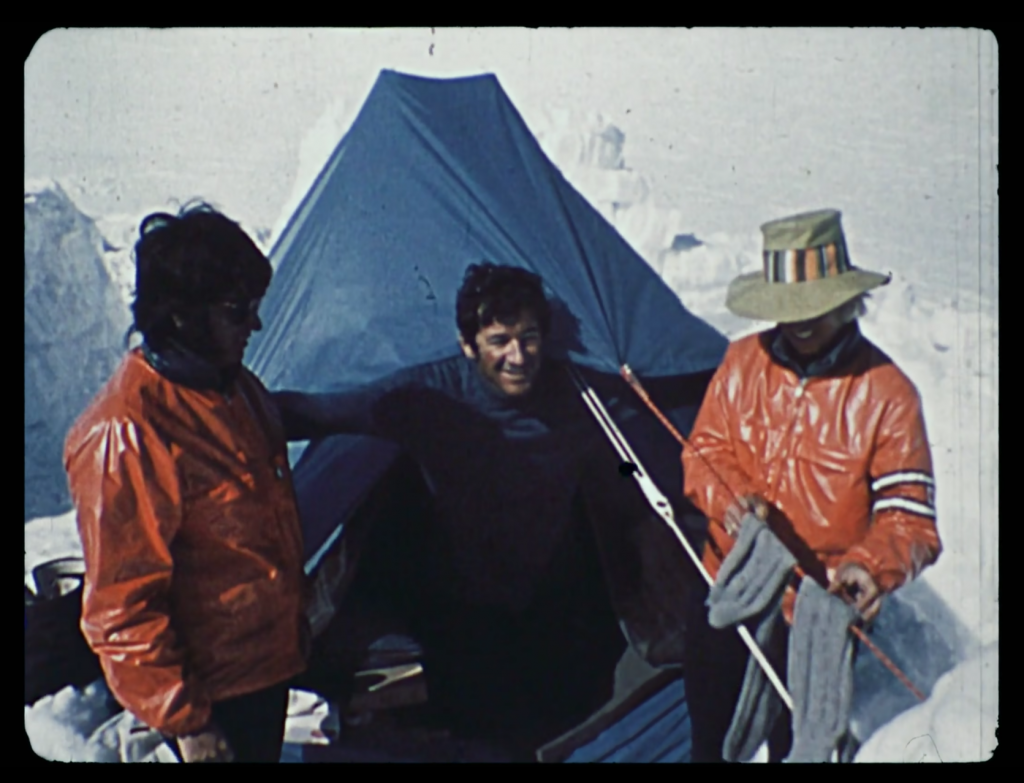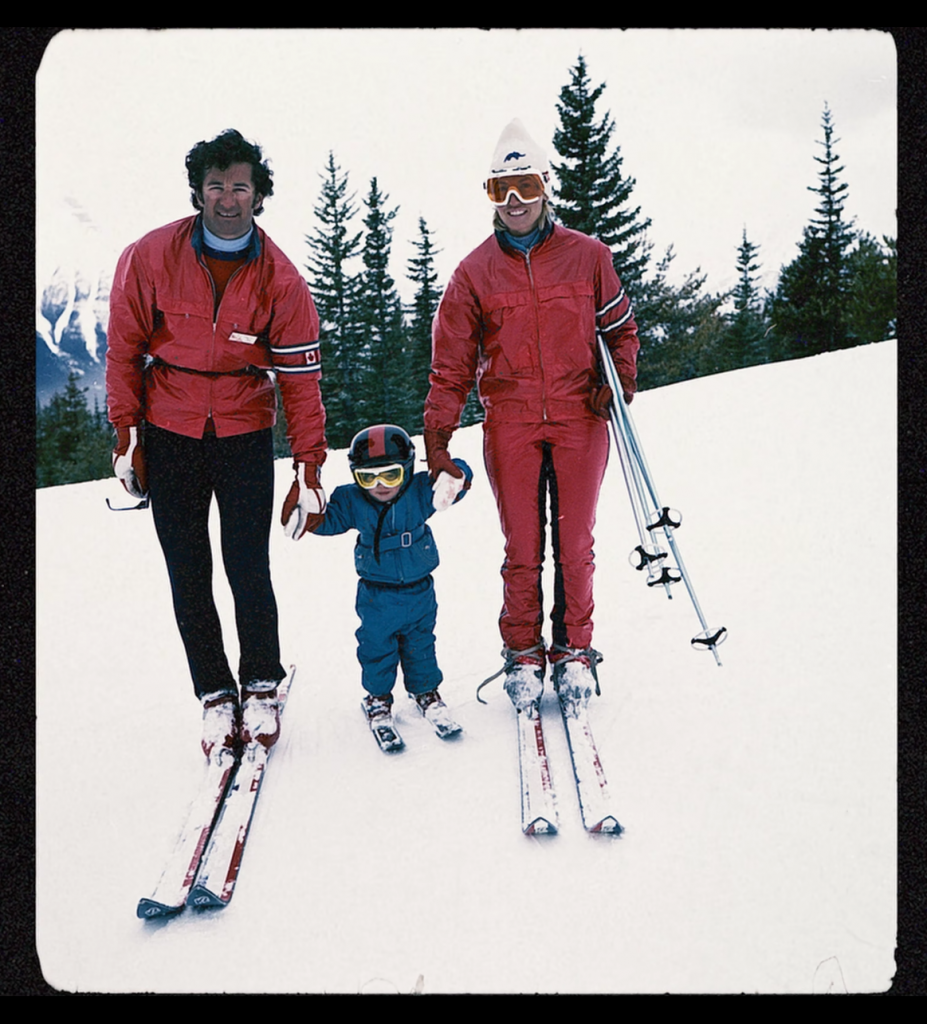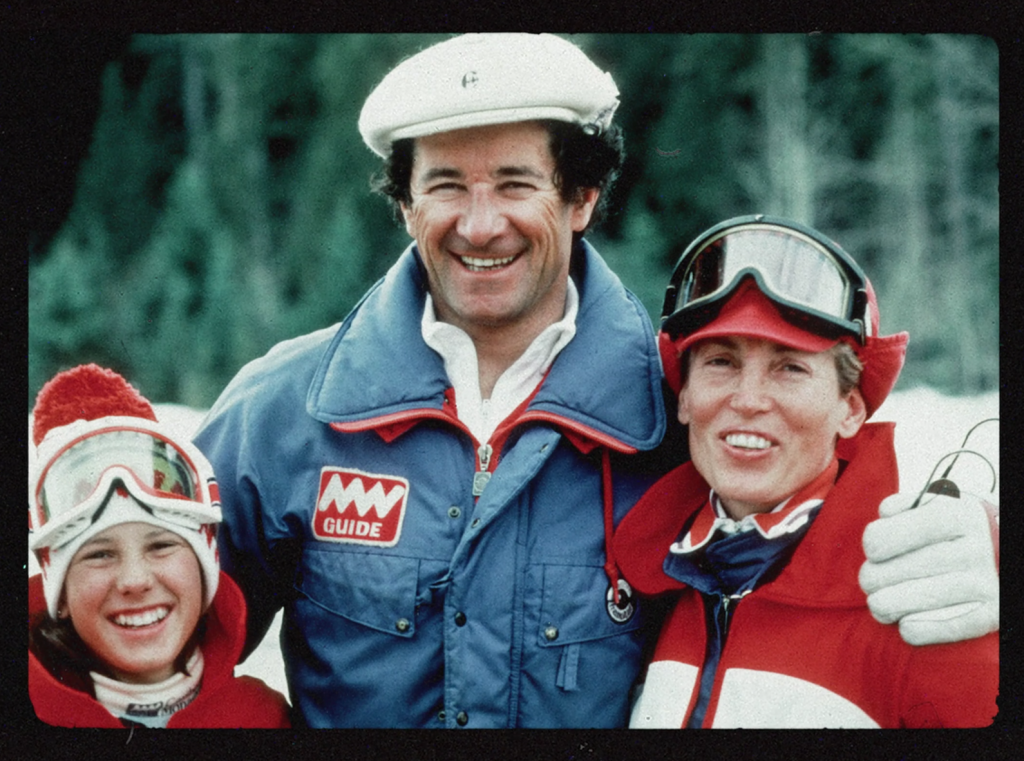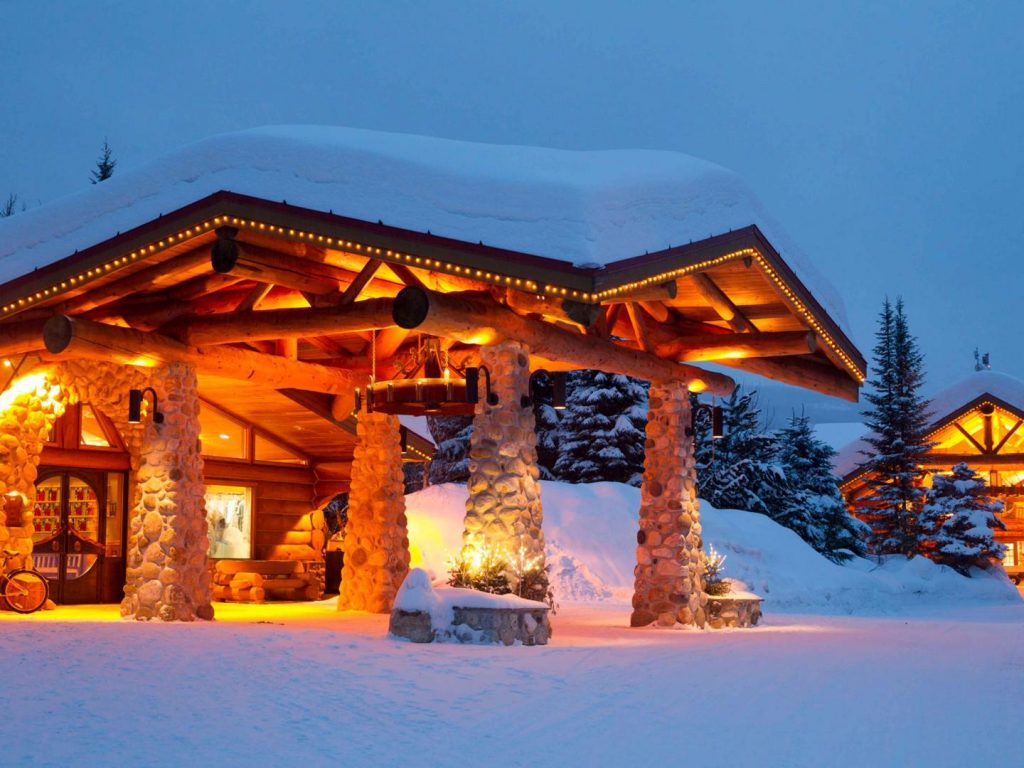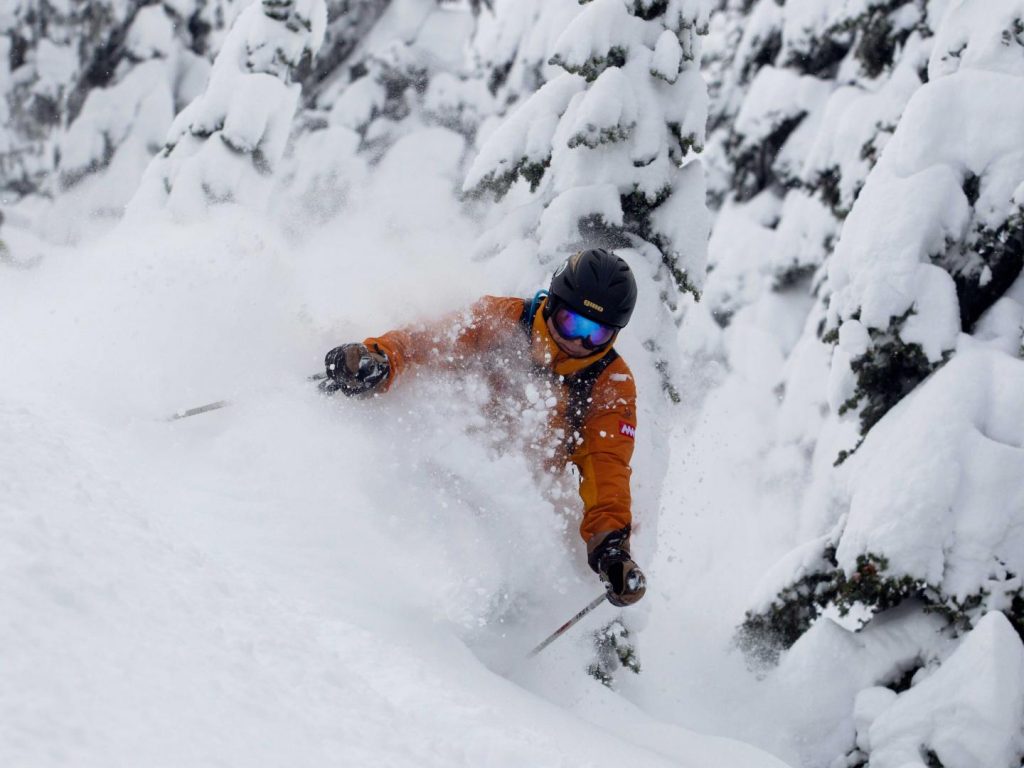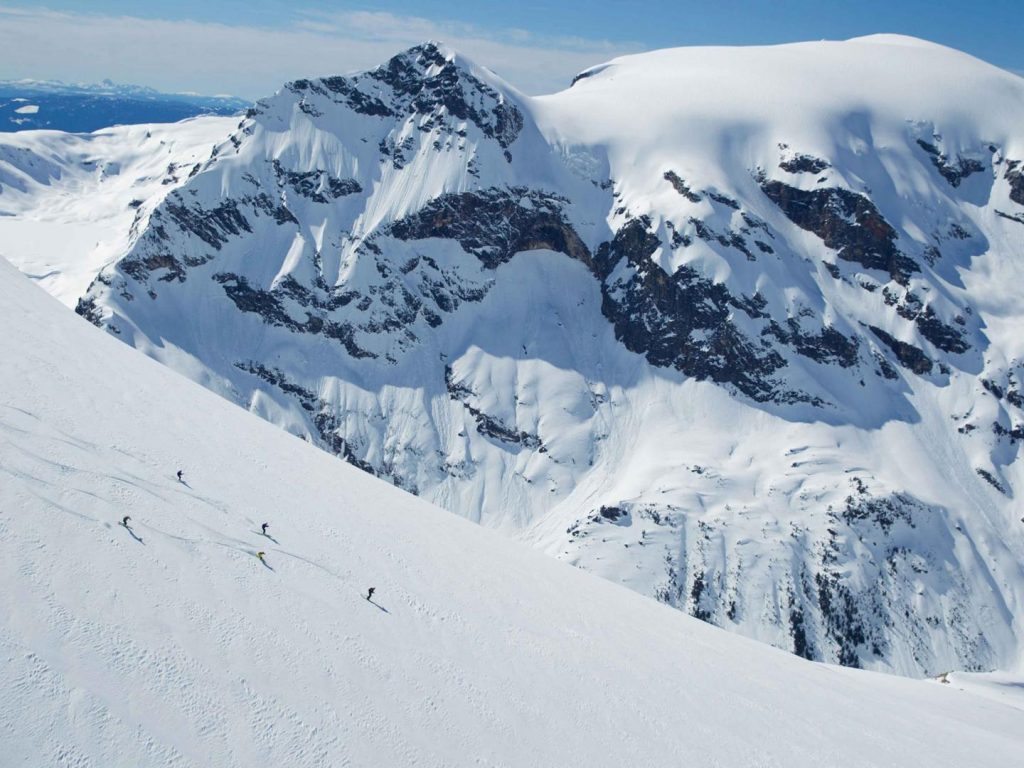Late last week, news broke that heliskiing pioneer, Mike Wiegele, had passed away. He was 82 years old and lived a truly remarkable life.
As avid heliskiers and business partners of the Wiegele operation, this news brings us tremendous sadness. But looking back on Mike’s story does the complete opposite: it makes us smile. So we thought we’d share his story with you today.
Mike was born in 1938 in rural Austria, where he adopted an unwavering work ethic from his hardworking parents. The family didn’t have enough money to ski. But by age 14, Mike’s curiosity overcame him. He chopped down an ash tree on the family property and worked with a local carpenter to build a pair of skis, which he took to the hills all on his own and learned to turn, slowly but surely.
As the years went on, Mike found that every time a good storm brought quality powder to the nearby mountains, it would rain shortly thereafter. So in 1959, he flew across the pond to Canada, where he’d heard the powder was simply endless. But there was a little problem: Mike didn’t fly quite far enough. He landed in Ontario, where the highest peak is about 2,200 feet high, and the average annual snowfall is only about 120 inches.
Mike bounced around Eastern Canada for a couple of years, working as a carpenter, then landing a job at Mont Tremblant ski school, in Quebec. It turned out he was quite good at teaching folks to ski, and another ski school job called his name at Sugar Bowl, in California. In 1965, he carried on to Banff to start an all-new ski program at Lake Louise. Finally, he’d made it to the Canada he’d always dreamed of.
This new venture at Lake Louise was highly focused on ski racing, and one of the many athletes Mike coached was Ken Read, who would go on to be a 2-time Olympian and 5-time World Cup Champion. In light of Mike’s passing, Ken rekindled the following story.
“I recall when I was 14, he arrived at our house and collected my older brother Ron and I, to go off for a hike to the Bow Glacier in early September, to ‘check it out’ for a ski camp,” said Read. “Two weeks later, the athletes of the Lake Louise Ski Club gathered at Num-ti-ja Lodge on the shore of Bow Lake, for a 10-kilometer hike up to the alpine hut beside the glacier and we put in two days of slalom. It was hard, but it was magic, to experience skiing on a glacier in the preseason. His philosophy was to ski every day you could, from season start to season end. Every day on the snow was an opportunity.”
With that eye for opportunity, Mike kept looking for what else was possible in the mountains. He explored the Canadian Rockies, Bugaboos, Cariboos, and Monashees. At the same time, he fell in love with a woman named Bonnie, who was a national champion in gymnastics, swimming, synchronized swimming, tandem surfing, and water-skiing. She was also one hell of a skier. They married in 1967, opened a ski shop, and began dreaming up a new era in the mountains—one with helicopters.
“We didn’t have anything figured out. And I never thought he would succeed,” Bonnie admitted in a short film about their story called Call Me Crazy. “But what I’ve learned from Mike is no matter what happens, you can’t give up.”
Between Mike, Bonnie, and the help of many friends, Mike Wiegele Heli-Skiing was born in 1970—just across the border in British Columbia. At the time, heliskiing was an entirely foreign concept, but adventure-seeking customers took a chance on Mike, only to find it was the greatest experience imaginable. And when Warren Miller made it up to the operation in 1972, the business began to boom.
The rest is history. Mike Wiegele Heli-Skiing became one of the world’s finest heliskiing operations, growing its acreage to 1.5 million over the years, with top-notch lodging, dining, service, and safety leadership. And while Mike’s passing comes with such sadness, guest experiences like the ones below that show just how special he truly was:
“Mike was at the center of attention, telling stories that got better every time you heard them. This all culminated with a game of ‘Ha Ha’ where everyone lay on the floor, with their head on someone’s stomach and tried to control the number of times they laughed. Mike was a natural leader who was comfortable in any situation, serious or fun, and while he might have seemed a bit quirky when you met him, he always left you with a smile and a bit of wonderment. The world was a better place with Mike, for sure.”
“Forever , I share the Story of how he caught me smoking out of my rented room at the Saddle one night and said to me…. “You smoke!? You have to quit now! He said pick a date and quit that day and never look back” so I picked a special day and quit a month later.”
“I grew up hearing of the Mike and Bonnie Banff stories and his adventure of trying out this dream in Blue River. He never forgot the people that helped him along the way just as he and Bonnie were always ready to lend a hand where needed. I remember at the Masters Finals In Whistler over 20 years ago when Bonnie was there to compete and Mike slid up to me in the start ‘ I haven’t skied on a groomed run in 15 years!’ Was his laugh as he cheered on Bonnie in her race. He did it to be there for her and he had no trouble cruising down to cheer.”
Skiing won’t be the same without Mike. But our collective dreams for skiing big mountains and making the most out of life will live on, thanks to his legacy. So with that, we say thank you, Mike, for everything.

